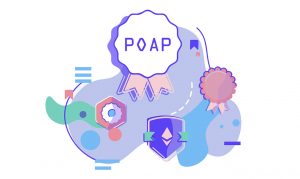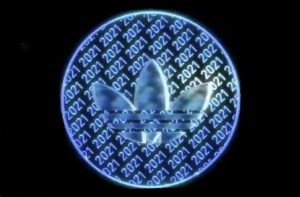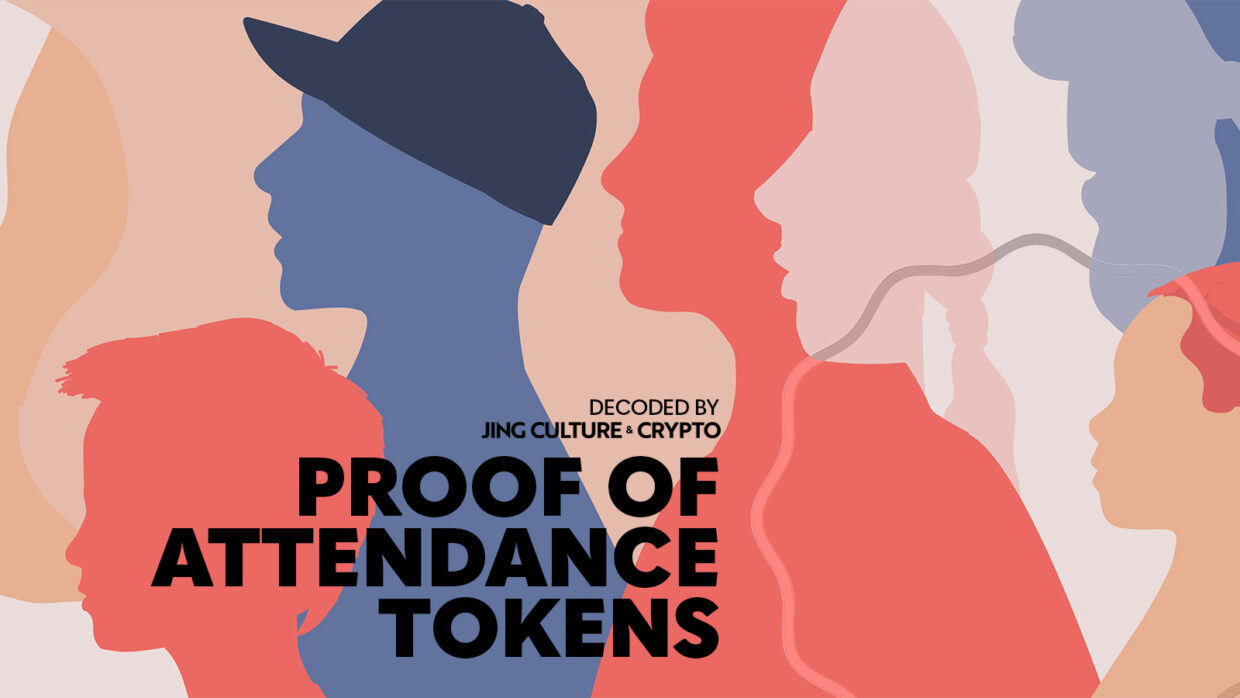Since NFTs came into view for the cultural sector, proof-of-attendance tokens have been put forward as a tool that institutions and event organizers could use to engage audiences on-chain. These collectibles offer something more to both cultural organizations and visitors: the opportunity for deeper audience connections and sustained engagement long after visitors have gone home. Proofs-of-attendance have already been tapped by brands such as Estée Lauder, artists including Foodmasku, and cultural venues like Nxt Museum — underscoring the utility and value of NFTs. So how do they work?
What is a proof-of-attendance token?

Minted on the POAP, proof-of-attendance NFTs are digital collectibles commemorating a holder’s attendance or participation in an event or exhibition. Image: poap.xyz
Proof of Attendance Protocol (POAP) is the platform and system that creates and stores proof-of-attendance tokens. Minted on the POAP, these collectible NFTs are digital proof that the collector attended or participated in “some form of interaction between the issuer and the collectors.” For example, visiting a museum exhibition or attending an event are a few examples of possible POAP use cases. Proof-of-attendance tokens are hosted on a “sidechain” to avoid high transaction fees, and so, are mostly freely given to event attendees by the organizers.
POAP NFTs are fully owned by their collectors, so they can be traded and sold. Because each badge is hosted on-chain, each badge is unique. However, because digital collectibles are meant to commemorate life events specific to their holder, POAPs may hold a different kind of “value” that standard NFTs do.
How do you create a POAP?

An Async POAP NFT, which could be collected during POAP’s NFT Treasure Hunt at NFT.nyc in 2021. Image: poap.xyz
Only event organizers (issuers) can mint their POAPs. Because the term is trademarked, the POAP website (after being approved by the POAP Curation Body) is the only place to create an “on-brand” NFT. Each proof-of-attendance NFT must have an image image associated with it, be minted under the POAP smart contract address, and have metadata related to a time or date.
How do you collect a POAP?
POAP NFTs can be collected in a number of ways. Collectors could scan a QR code to collect their POAP badges or download their POAP via email. This is part of the beauty of POAPs: collectors don’t need a crypto wallet to reserve their POAP, but simply use an email address. While this doesn’t mint the POAP to the blockchain (this can only be done with an Ethereum wallet), this makes the collectible widely distributable to all event attendees.
What are some examples of POAP applications?

Nxt Museum in Amsterdam has become one of the earliest museums to adopt proof-of-attendance NFTs. Image: Julius Horsthuis, “Foreign Nature” at UFO — Unidentified Fluid Other / Nxt Museum
Amsterdam’s Nxt Museum offers one of the earliest examples of POAP use by a cultural institution in its current exhibition UFO — Unidentified Fluid Other. This show explores the merging of the digital world with the physical, and visitors are encouraged to keep an eye out for POAPs while moving through the spaces. These POAPs are hidden throughout the show, with the first NFT drop available at the museum store.
POAPs can also be offered as recognition trophies — imagine a valedictorian being issued a POAP to commemorate their academic achievements, or a speaker scanning a code on the podium for giving a keynote. Individuals can even carry personal POAPs, as Web3 influencer Gmoney does.
How are POAPs different from physical memorabilia?
In a sense, the idea behind both isn’t different. Both are intended to commemorate an experience that someone had at an event. A physical object, like an item purchased from a museum gift shop, can serve such a purpose. Proof-of-attendance tokens might be more akin to selfies in that they both allude to the greater experience beyond the image itself, an assertive “I was really here.”
Because a POAP is on-chain, the capability for preserving these collectibles is much greater than physical objects. Shirts may fade, knick knacks can get lost or broken, but the token remains a consistent marker of the experiences that were had.
What are some opportunities that POAPs present?

Last year, adidas launched its first POAPs as a way to identity the most loyal and engaged fans of its CONFIRMED app. Image: @adidasOriginals on Twitter
For both brands and cultural organizations, POAP engagement can be used to measure interest and engagement, while serving as a means of extending ownership to the audience.
Beyond proving one’s attendance, the collectibles can also be used by collectors to access event-specific content like group chats, virtual book drops, backstage passes, raffles, discounted tickets, and so on. This access can extend past the event duration itself, offering a way to continue to engage POAP holders and those who routinely attend events at specific institutions.
Lastly, as proof-of-attendance tokens are free and have a very low barrier to entry, visitors who are unfamiliar with crypto don’t face a steep learning curve or pressure to continue to use the POAP post-event, ensuring that everyone can participate.



